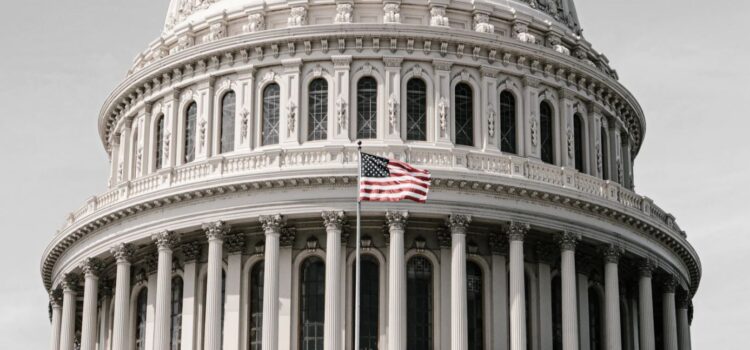

This article is an excerpt from the Shortform summary of "The Federalist Papers" by Alexander Hamilton. Shortform has the world's best summaries of books you should be reading.
Like this article? Sign up for a free trial here .
What are the Constitutional powers of the Senate? How does Federalist Paper 65 argue in favor of this structure in the Constitution?
The powers of the Senate are meant to balance the House. Federalist Paper 65 also notes that the Senate is a check on the other branches.
See how Federalist 65 discusses the Constitutional powers of the Senate.
Constitutional Powers of the Senate
The Senate is the upper chamber of the national legislature. Each state was to have two senators, regardless of population. This was also meant to counterbalance the House, where representation was proportional based on a state’s population (with three-fifths of a state’s slave population counting as one person for these purposes). Naturally, the powers of the Senate conferred an advantage on smaller states, who received disproportional representation in the upper chamber relative to their actual number of voters.
(Shortform note: Some political observers have argued that the disproportionate representation in the Senate has become problematic and undermines democratic norms. At the time of the Constitution’s adoption, the largest state, Virginia, had a population roughly nine times greater than that of the smallest state, Georgia. Today, the most populous state, California, has a population approximately 70 times that of the smallest state, Wyoming. Put another way, Wyoming voters have 70 times the voting power of Californians within the Senate.)
The Senate, as the upper chamber, was designated with certain special privileges according to Federalist 65. One of the most important of these was its sole prerogative, via a two-thirds vote, to ratify treaties negotiated and submitted to it by the President. The Constitutional powers of the Senate also included approving all cabinet appointments submitted by the president. These were both powerful checks on the executive branch.
Conviction After Impeachment
Another, arguably more important check on the power of the executive branch was the Senate’s sole authority to convict members of the executive (including the President) for high crimes and misdemeanors by a two-thirds vote, following impeachment in the House. This high threshold for conviction made it highly unlikely that a President would be removed from office for purely partisan reasons. Only those who had committed truly heinous offenses would be convicted.
(Shortform note: This has indeed proven to be a high bar. Although three presidents have been impeached by the House as of 2020—Andrew Johnson, Bill Clinton, and Donald Trump—none has been convicted in the Senate. Richard Nixon likely would have been both impeached and convicted had he not resigned from office in 1974 amid the Watergate scandal.)
According to Federalist Paper 65, this was one of the important powers of the Senate. The Senate was the best place to house this crucial function. It would be unjust and contrary to basic principles of the rule of law to give the House the power to both charge and convict an official. The Supreme Court, meanwhile, was too weak, too distant from the people, and too small in numbers to have the legitimacy to remove high-ranking officials. The members of the Supreme Court would also have been nominated to their office by the president, and thus might be too biased in favor of the executive branch to behave impartially.
In addition, the Supreme Court might later be called on to preside over an ordinary trial of such officials after they’d been removed from office. It would be inconsistent with common law principles to force a defendant to appear twice before the same judicial body.
As with so many other aspects of the Constitution, the decision to grant the upper house of the national legislature the power to convict corrupt officials was strongly supported by precedent. Such was the practice with the House of Lords in Great Britain, as well as the state senates in many of the states (including New York, to whose voters The Federalist Papers were originally addressed). The powers of the Senate were in line with other governments.

———End of Preview———
Like what you just read? Read the rest of the world's best summary of Alexander Hamilton's "The Federalist Papers" at Shortform .
Here's what you'll find in our full The Federalist Papers summary :
- The genius of the founding fathers in how they designed the United States Constitution
- Why it was critical for the United States to form a union rather than stay separated as colonies
- How Alexander Hamilton anticipated social issues that are still relevant today






